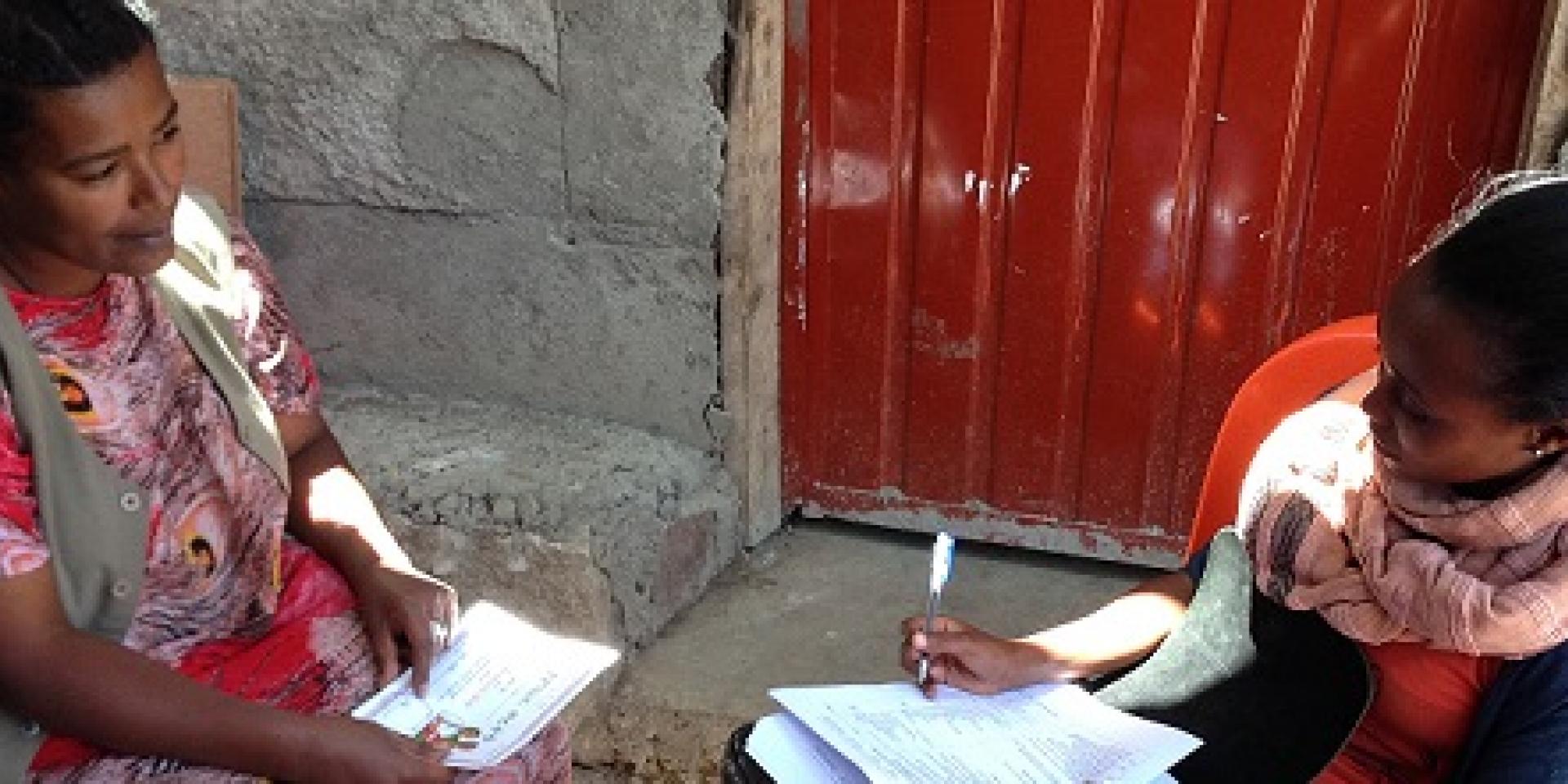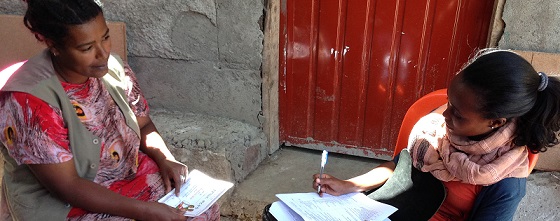Mixed methods research in action: Using qualitative methods to complement quantitative approaches

 Questions about the practical advantages and how-to’s of mixed-methods research are often posed by researchers who plan to collect quantitative data and are considering whether to add a qualitative component. Benefits of qualitative research stretch far beyond enhancing the interpretation of quantitative results and may even lead to greater publication and funding opportunities from richer and more emergent ideas. In this blog post, we address the added value of and ways to integrate qualitative methods and provide an example from a study on child feeding practices in Bangladesh.
Questions about the practical advantages and how-to’s of mixed-methods research are often posed by researchers who plan to collect quantitative data and are considering whether to add a qualitative component. Benefits of qualitative research stretch far beyond enhancing the interpretation of quantitative results and may even lead to greater publication and funding opportunities from richer and more emergent ideas. In this blog post, we address the added value of and ways to integrate qualitative methods and provide an example from a study on child feeding practices in Bangladesh.
This post was first published by the CGIAR Research Program on Policies, Institutions, and Markets (PIM).
How can qualitative methods enhance my current research project?
A researcher’s early foray into qualitative methods may involve illustrations to support quantitative results or focus groups to test survey questions. Though these approaches have merit, a more genuine integration of qualitative methods into the research design is able to offer much more. A unique contribution of qualitative research is that it asks fundamentally different research questions that explore both ‘how’ and ‘why’. In asking different questions, qualitative approaches can shed light on the mechanisms behind social processes and human behavior. These approaches add value by reframing existing research questions. They may also better identify target populations for both behavioral interventions and study designs. Combining both quantitative and qualitative approaches is often able to illuminate multiple aspects of a research topic by asking different research questions within a mixed-methods study.
How can qualitative methods be integrated at different stages of the research process?
There is no exact formula for how to sequence qualitative methods in a mixed-methods research design and which methods should be used. These decisions are up to the research team, and the aim should be to select the methods that best answer the research questions. Qualitative methods can be integrated at different time points throughout a research study. A particular qualitative method may be included at the start of a study as formative research to identify characteristics and behaviors of target populations. Qualitative approaches can also be integrated at the end of the study to explain quantitative results. In sequential designs, both qualitative and quantitative data may be collected at multiple time points, and each step is able to build on sampling designs, data, or findings from earlier steps.
Moreover, the broad category of qualitative approaches incorporates a range of specific methods. In-depth interview that are either unstructured (limited planning of scope) or semi-structured (based on a discussion guide) can serve to collect data on life histories, personal experiences, or individuals’ perspectives on particular topics. Key informant interviews are similar to in-depth interviews, but are designed to target individuals with specialized knowledge about a community or program. Participant observation is useful for identifying natural behaviors in their context, and focus groups are ideal for collecting data on social and cultural norms and gaining a broad overview of an issue. Case studies can combine multiple methods to build a detailed case of an organization, community, or individual. Qualitative research should be as rigorous and systematic as quantitative, and it allows greater flexibility in sampling, data collection, and analysis.
Mixed methods study of child feeding practices in Bangladesh
Alive & Thrive is a multi-year initiative to save lives, prevent illness, and ensure healthy growth and development of children through improved breastfeeding and complementary feeding practices. In its Phase 1 (2010-2014), IFPRI led the process and impact evaluations of large-scale social and behaviour change communication interventions to improve child feeding practices, including messages targeted to mothers and families of young children on appropriate breastfeeding and timing, quality, quantity, and frequency of feeding.
The population-level prevalence and change over time in standardized indicators were measured through household surveys by asking the child’s caregiver to report on child feeding during the previous 24 hours. However, at the individual level, child feeding practices may vary from day to day and week to week. In order to identify how and why those patterns change, we carried out in-depth interviews with key actors (mothers, fathers, and grandmothers) and observations at several time periods (key ages when child feeding practices transition) among a sample of 18 households.
While we observed a relatively high prevalence of recommended practices in the population-level survey, the longitudinal case studies showed that none of the families followed the most optimal breastfeeding and complementary feeding practices throughout the child’s early years. The high variability in feeding patterns was caused by both maternal factors and enabling environments. The qualitative case studies revealed the different patterns of suboptimal feeding practices, household factors, and dynamics of household decision-making that need to be addressed by interventions to close the gaps in child feeding practices that persist and are unobserved in survey responses.
FURTHER READING
- Axinn, W. G., & Pearce, L. (2006). Mixed Method Data Collection Strategies. New York, NY: Cambridge University Press.
- Creswell, J. W., & Plano Clark, V. L. (2011). Conducting and designing mixed methods research. Thousand Oaks, CA: Sage Publications, Inc.
ABOUT THE AUTHORS
 Sunny S. Kim is a Research Fellow in the Poverty, Health and Nutrition Division at IFPRI. Her research focuses on evaluating program impacts on maternal and child health and nutrition as well as the implementation processes and uptake of interventions using mixed methods. Her current work involves the process and impact evaluations of maternal and infant and young child nutrition interventions in Bangladesh, Ethiopia, Nepal and Vietnam, and the operational studies of the government women’s and child health and nutrition services in India. Sunny holds a Ph.D. in International Nutrition from Cornell University and a MPH in International Health Promotion from the George Washington University.
Sunny S. Kim is a Research Fellow in the Poverty, Health and Nutrition Division at IFPRI. Her research focuses on evaluating program impacts on maternal and child health and nutrition as well as the implementation processes and uptake of interventions using mixed methods. Her current work involves the process and impact evaluations of maternal and infant and young child nutrition interventions in Bangladesh, Ethiopia, Nepal and Vietnam, and the operational studies of the government women’s and child health and nutrition services in India. Sunny holds a Ph.D. in International Nutrition from Cornell University and a MPH in International Health Promotion from the George Washington University.
 Jessica Heckert is a Research Fellow in the Poverty, Health and Nutrition Division at the International Food Policy Research Institute. Using both quantitative and qualitative methods, she addresses research questions related to 1) adolescent health and 2) the intersection of household gender dynamics and health. She is currently involved in studies evaluating the impacts of large-scale nutrition interventions on maternal and child health and improving the measurement of women’s empowerment. She is a social demographer and earned a Ph.D. in Demography and Human Development & Family Studies from the Pennsylvania State University in 2013.
Jessica Heckert is a Research Fellow in the Poverty, Health and Nutrition Division at the International Food Policy Research Institute. Using both quantitative and qualitative methods, she addresses research questions related to 1) adolescent health and 2) the intersection of household gender dynamics and health. She is currently involved in studies evaluating the impacts of large-scale nutrition interventions on maternal and child health and improving the measurement of women’s empowerment. She is a social demographer and earned a Ph.D. in Demography and Human Development & Family Studies from the Pennsylvania State University in 2013.
This post is part of EnGendering Data, a blog on collecting and analyzing sex-disaggregated data to improve the knowledge base on the role of gender in agriculture and food security, maintained by the CGIAR Research Program on Policies, Institutions, and Markets (PIM).